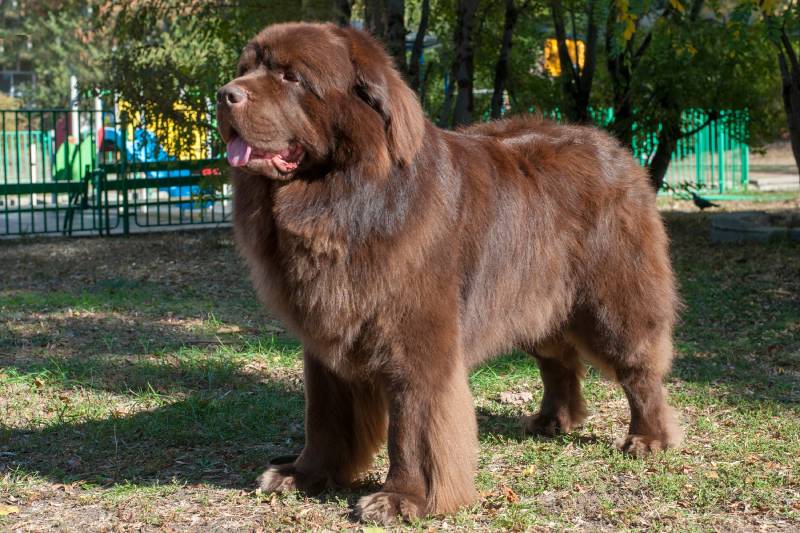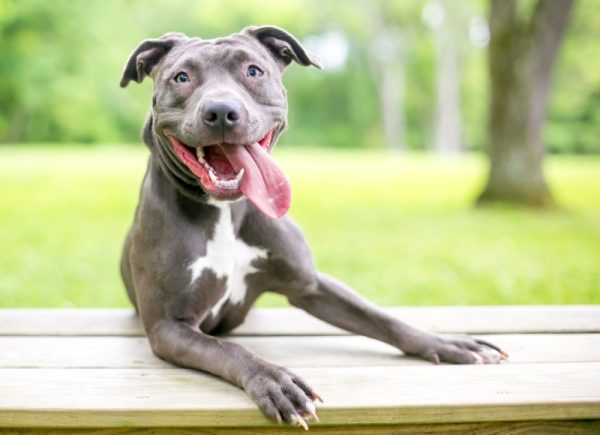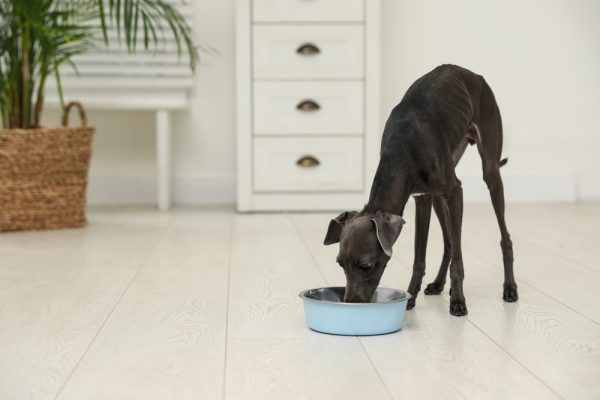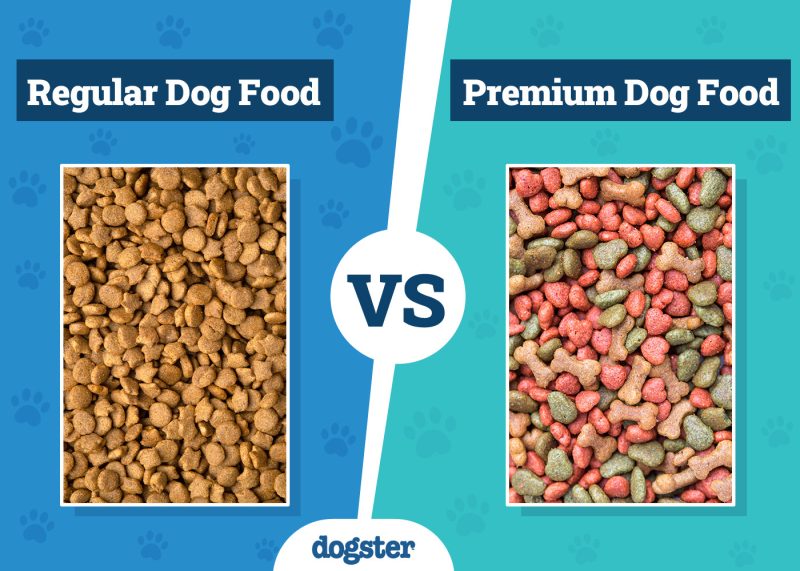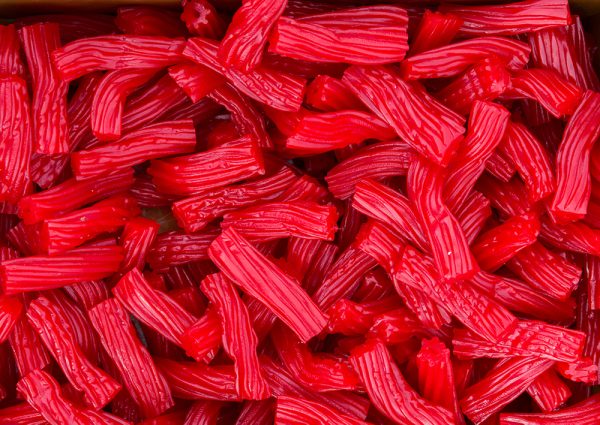Newfoundland dogs are enormous, and some large males can weigh up to 150 pounds! Although they’re one of the largest pedigree dog breeds, Newfoundlands or Newfies are usually some of the gentlest companions. They’re known for being friendly and tolerant with children and are typically extraordinarily patient. They were bred to brave the cold waters off Newfoundland in Canada and typically have thick, dense coats that come in black and white, gray, black, and brown.
Breed Overview
Height:
26–28 inches
Weight:
100–150 pounds
Lifespan:
8–10 years
Colors:
Black and white, brown, gray and black
Suitable for:
Laid-back families looking for a gentle, easy-going large dog
Temperament:
Gentle, loyal, and mellow
There’s not much variation regarding the Newfoundland’s physical appearance. They are large dogs with medium to long dense coats that require a fair amount of brushing due to their high shedding levels. Male dogs tend to be larger than females, and while male and female Newfoundlands are known for their gentle personalities, female dogs are often a bit more independent.
Brown Newfoundland Dog Breed Characteristics

The Earliest Records of Brown Newfoundland Dogs in History
The breed’s early history is somewhat unclear. They may be related to bear-hunting dogs brought to the island of Newfoundland in the 1100s by Norse explorers. Or they could be the result of mixes between Native American dogs and European breeds introduced by sailors and fishermen that were developed into all-around working dogs optimized for drafting and swimming, particularly in cold environments.
The Newfoundland’s most characteristic traits were likely established around the early 1600s. One named Seaman even traveled with the Lewis and Clark expedition as they crossed the North American continent in the early 1800s. Seaman, who worked as a hunting and guard dog during the journey, appears in several memorials dedicated to the expedition.
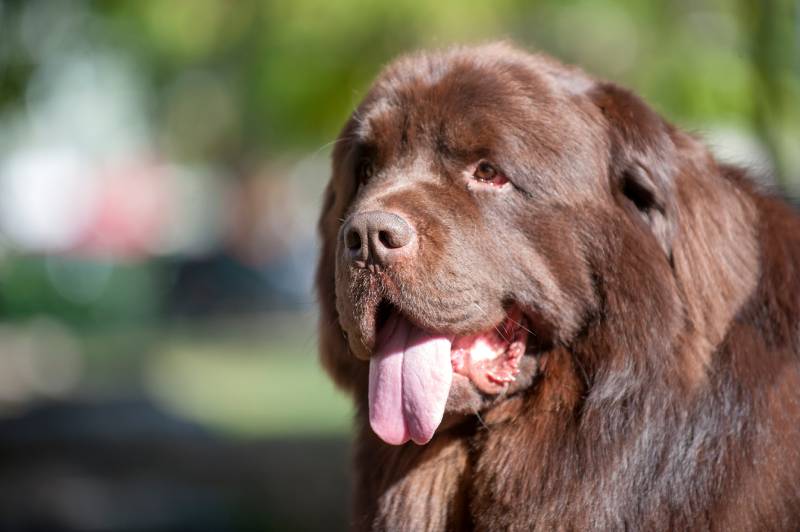
How Brown Newfoundland Dogs Gained Popularity
Dogs native to North America formed the basis for the breed that was developed specifically to meet the needs of Newfoundland’s settler population. This resulted in large, devoted dogs able to work as draft animals and swim like champs. They were tailor-made to meet the needs of 17th-century European settlers, hunters, and explorers in North America. Newfoundlands steadily grew in popularity after the early 17th century.
However, they were also popular in the United Kingdom. Lord Byron, the noted Romantic poet, wrote a famous epitaph commemorating his beloved Newfoundland, Boatswain. The poet and his dog are buried at Newstead Abbey, and Boatswain’s memorial is larger than his human companion’s.
Newfoundlands have long been beloved companions in the United States. In the 1960s, Bobby Kennedy, the nation’s attorney general, had a Newfoundland named Brumis. They were the 42nd most popular breed in the United States in 2023, according to the American Kennel Club (AKC).
Formal Recognition of Brown Newfoundland Dogs
Newfoundlands have long been recognized by kennel clubs around the world. The breed has remained the same since the early 1600s. The (AKC) granted the Newfoundland recognition back in 1886. The Government of Labrador and Newfoundland recently recognized the breed in 2023 as a fundamental part of the province’s “historical and cultural heritage.” Newfoundlands have also been recognized by The Kennel Club in the United Kingdom.

Top 4 Unique Facts About Brown Newfoundland Dogs
1. They’re Truly at Home in the Water
Newfoundlands were bred as working water dogs. They assisted sailors by retrieving ropes and lines in the cold waters of the North Atlantic. Their thick, dense double coats are water-resistant to help them stay warm when swimming in cold seas. They’re fantastic swimmers and even have webbed feet! Most have wide tails that help them efficiently make turns and change directions in the water.
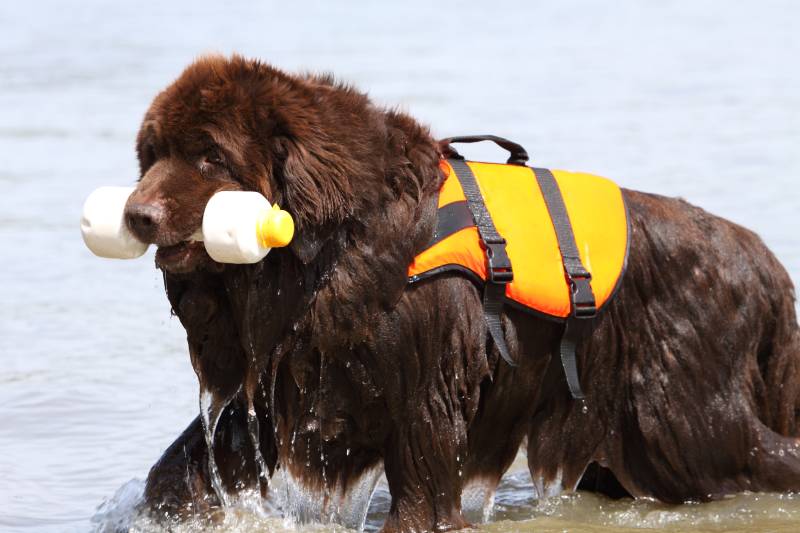
2. They Work as Water Rescue Dogs
Newfoundlands were often tapped to rescue sailors and people drowning at sea. The breed has a long and illustrious history of performing heroic deeds as water rescue dogs, particularly in cold conditions. They’re so skilled in the water that Newfoundlands can still be found dashing through the surf to save struggling swimmers.
3. They’re Some of the Largest Pedigree Dogs
Large male Newfoundlands can easily weigh close to 150 pounds, making them one of the largest canines. Few dogs outweigh these gentle giants, and those that do are genuinely huge, such as Leonberger Dogs and Mastiffs. Male Leonberger Dogs can weigh up to 170 pounds and grow to over 31 inches at the withers, and male Mastiffs can tip the scales at an unbelievable 230 pounds.
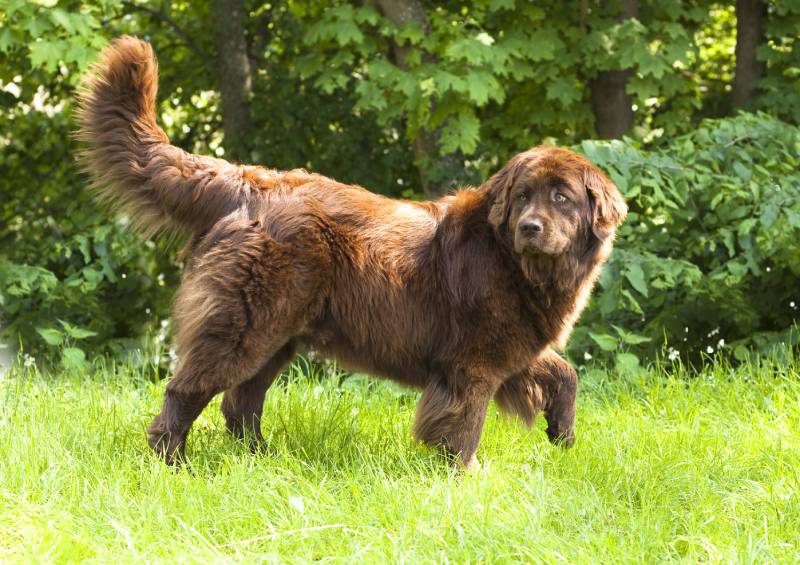
4. They Worked as Drafting Dogs
Newfoundlands not only assisted fishermen by retrieving lines and traps from the cold waters around Newfoundland, but these all-around working dogs also helped pull carts laden with fish when heading to market. They perform well in doggie sports, such as carting and drafting.

Do Brown Newfoundland Dogs Make Good Pets?
Brown Newfoundlands make fantastic pets. They’re sweet, gentle, and typically love to spend time with people. They’re known as fantastic family dogs, and they’re often extremely patient around children. Also, most Newfoundlands won’t try to torment the family cat. Because they become so attached to their human companions, Newfoundlands can develop separation anxiety when left alone.
They don’t have outsized physical activity needs, and most are fine with around 30 to 60 minutes of daily exercise. They’re incredibly intelligent and are known for being easy to train, particularly if you start working on the basics as early as possible.
Newfoundlands cost quite a bit to care for since they require more food, bigger beds, and more expensive veterinary procedures. They also have high grooming needs and shed year-round! Although they make truly fantastic companions, they typically live relatively short lives of between 9 and 10 years.

Conclusion
Brown Newfoundlands are large, sturdily built dogs with thick fur. They were bred to assist sailors working in the North Atlantic, and they’re quite at home in the water, as indicated by their water-resistant coats and webbed feet. Although they’re large, Newfoundlands are beloved for their sweet, gentle personalities. Most are fantastic with kids, and they’re loving, devoted, and patient. Newfoundlands love being around their human companions, so they’re often easy to train, particularly if you get started as early as possible.
- Related Read: Newfoundland Dog Husky Mix: Care, Pictures, Info & More
Featured Image Credit: B.Stefanov, Shutterstock
